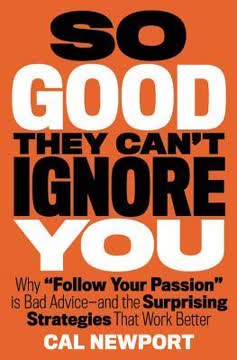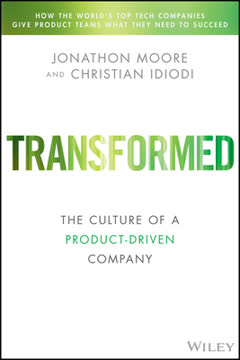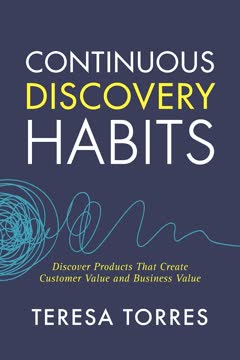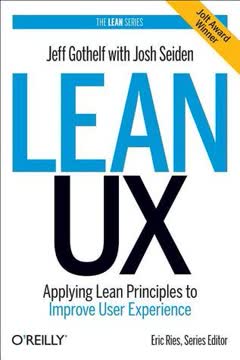Key Takeaways
1. Embrace uncertainty and continuous change in the digital age
Everything's changing, all the time.
Digital transformation is inevitable. The ubiquity of software and digital technologies has increased the pace of change and level of uncertainty in every industry. Organizations must recognize that traditional, industrial-age management approaches are no longer effective in this new environment. Instead of trying to predict and control outcomes, companies need to develop the capability to adapt quickly to changing circumstances.
Uncertainty is the new normal. Examples like Facebook's photo reporting feature and Amazon's Fire Phone illustrate how even tech giants can struggle to predict user behavior and market reception. The key is to acknowledge uncertainty and build systems that can rapidly sense changes and respond accordingly. This requires a fundamental shift in mindset from long-term planning to continuous learning and adaptation.
Signs of increasing uncertainty:
- Rapid technological advancements
- Changing customer expectations
- Disruptive business models
- Unpredictable market conditions
2. Adopt a "sense and respond" approach to navigate complexity
Sense and respond is simply the label we've applied to a group of related approaches that seem to be our best way forward at the moment.
Continuous feedback loop. The sense and respond approach relies on establishing a two-way conversation with the market. Organizations must continuously gather data, conduct experiments, and adjust their strategies based on real-world feedback. This iterative process allows companies to navigate uncertainty and complexity more effectively than traditional planning methods.
Learn through action. Instead of extensive upfront analysis, sense and respond emphasizes taking small, calculated risks and learning from the results. This approach is exemplified by companies like Etsy, which releases software updates 50 times a day, allowing for rapid experimentation and optimization. The key is to create systems that can quickly detect changes in user behavior or market conditions and respond with appropriate adjustments.
Core elements of sense and respond:
- Continuous monitoring of user behavior and market trends
- Rapid experimentation and A/B testing
- Data-driven decision making
- Flexible and adaptive strategies
3. Shift from output-based to outcome-based planning and execution
Feature-driven companies can shift to sense and respond approaches, but this shift must be driven by leadership.
Focus on outcomes, not outputs. Traditional project management often emphasizes delivering specific features or products (outputs) rather than achieving desired business results (outcomes). Outcome-based planning involves setting clear goals and giving teams the flexibility to determine the best way to achieve those goals. This approach allows for greater adaptability and ensures that efforts are aligned with creating genuine value for customers and the business.
Rethink success metrics. Instead of measuring success by the number of features delivered or projects completed on time and budget, organizations should focus on metrics that reflect real-world impact. This might include customer acquisition, retention rates, or revenue growth. By tying success to tangible business outcomes, teams are incentivized to learn and adapt their approach based on market feedback.
Examples of outcome-based planning:
- Setting revenue or user growth targets instead of feature lists
- Measuring customer satisfaction or engagement rather than project milestones
- Allowing teams to pivot strategies based on market feedback
4. Create autonomous, cross-functional teams for faster learning and innovation
Small, self-sufficient, cross-functional teams are the key working unit of the sense and respond approach.
Empower teams to make decisions. Autonomous teams with diverse skills can respond more quickly to changing circumstances than traditional hierarchical structures. These teams should have the authority to make decisions and adjust their approach based on what they learn from interacting with customers and analyzing data.
Break down silos. Cross-functional teams that include members from various disciplines (e.g., design, engineering, product management, marketing) can better address complex challenges and create more holistic solutions. This collaborative approach also reduces handoffs and miscommunication between departments, leading to faster innovation cycles.
Key characteristics of effective cross-functional teams:
- Diverse skill sets and perspectives
- Clear goals and success metrics
- Authority to make decisions
- Direct access to customer feedback and data
- Regular communication and knowledge sharing
5. Implement continuous delivery and experimentation across the organization
As you move from manufacturing to a world of continuous production—as embodied by DevOps, agile, and lean startup—it is important to consider your other business processes and transition them to continuous ones.
Embrace DevOps practices. Continuous delivery and deployment allow organizations to release small updates frequently, reducing risk and enabling faster learning. This approach, pioneered by companies like Amazon and Netflix, requires close collaboration between development and operations teams.
Extend experimentation beyond product development. The principles of continuous experimentation should be applied to other business functions, such as marketing, sales, and customer service. This allows organizations to optimize all aspects of their operations based on real-world data and feedback.
Areas for continuous experimentation:
- Product features and user experience
- Pricing and packaging strategies
- Marketing messages and channels
- Customer support processes
- Internal workflows and processes
6. Rethink traditional business functions through a digital lens
You are in the software business.
Digital transformation is comprehensive. Every aspect of business, from finance to human resources, is being impacted by digital technologies. Organizations must reevaluate their core processes and functions to remain competitive in the digital age. This may involve reimagining traditional business models, adopting new technologies, or creating entirely new digital offerings.
Adapt or risk obsolescence. Companies that fail to adapt to the digital reality risk being disrupted by more agile competitors. Examples like Blockbuster's failure to respond to Netflix's digital model illustrate the dangers of clinging to outdated business practices. Leaders must proactively seek ways to leverage digital technologies to enhance their value proposition and operational efficiency.
Areas for digital transformation:
- Customer experience and engagement
- Product and service delivery
- Supply chain and operations
- Employee productivity and collaboration
- Data analytics and decision-making
7. Cultivate a culture of learning, empathy, and collaboration
We believe the best managers acknowledge and make room for what they do not know—not just because humility is a virtue but because until one adopts that mindset, the most striking breakthroughs cannot occur.
Foster a learning mindset. Organizations must create an environment where experimentation, failure, and continuous learning are encouraged. This requires leaders to model humility, embrace uncertainty, and prioritize learning over short-term results. Regular retrospectives and blameless post-mortems can help teams reflect on their experiences and improve their processes.
Develop customer empathy. Understanding and empathizing with customers' needs and pain points is crucial for creating valuable solutions. Techniques like regular customer interviews, user testing, and data analysis can help teams develop deeper insights into their target audience. Companies like Maxdome have found success by prioritizing customer empathy across all levels of the organization.
Key elements of a learning culture:
- Humility and openness to new ideas
- Permission to fail and learn from mistakes
- Continuous feedback and improvement
- Cross-functional collaboration and knowledge sharing
- Customer-centric decision making
Last updated:
FAQ
1. What is Sense and Respond by Jeff Gothelf about?
- Core premise: Sense and Respond explores how organizations can thrive in the digital age by continuously listening to customers and iterating products, rather than relying on rigid, top-down planning.
- Management shift: The book advocates for moving away from traditional command-and-control models to a sense and respond approach that embraces uncertainty and continuous learning.
- Digital disruption: It highlights how digital technology disrupts industries, requiring new management, cultural, and operational practices to stay competitive.
- Organizational transformation: The book covers the necessary cultural, structural, and process changes for organizations to adapt and succeed in a software-driven world.
2. Why should I read Sense and Respond by Jeff Gothelf?
- Relevance to all industries: The book explains why every organization, regardless of sector, must now think and operate like a software business to survive digital disruption.
- Practical frameworks: It provides actionable methods such as outcome-based road maps, mission command, and continuous delivery that leaders and teams can apply immediately.
- Cultural guidance: Sense and Respond addresses the importance of fostering a learning culture, collaboration, and adaptability, which are essential for long-term success.
- Avoiding costly mistakes: By adopting the book’s principles, readers can avoid common pitfalls like rigid planning, ignoring customer feedback, and failing to adapt to market changes.
3. What are the key takeaways from Sense and Respond by Jeff Gothelf?
- Continuous learning is essential: Organizations must adopt rapid, iterative cycles of experimentation and feedback to reduce uncertainty and discover value.
- Outcome over output: Success should be measured by achieving business outcomes, not just delivering features or outputs.
- Empowered teams: Small, cross-functional teams with autonomy are critical for innovation and responsiveness.
- Culture matters: A learning culture—characterized by humility, permission to fail, and collaboration—is foundational for thriving in the digital era.
4. What is the "sense and respond" approach described by Jeff Gothelf?
- Definition: Sense and respond is a management philosophy that prioritizes ongoing sensing of customer needs and market signals, followed by rapid, flexible responses.
- Key principles: It involves continuous two-way conversations with customers, outcome-based planning, and empowering teams to experiment and learn.
- Contrast with traditional models: Unlike command-and-control or assembly line approaches, sense and respond embraces uncertainty and aligns teams around strategic intent rather than detailed specifications.
- Continuous feedback loop: The approach relies on frequent customer feedback and iterative development to guide decision-making.
5. How does Sense and Respond by Jeff Gothelf explain dealing with uncertainty in the digital age?
- Uncertainty as the norm: The book emphasizes that digital products and services create unpredictable customer behaviors, making detailed upfront planning ineffective.
- Continuous learning cycles: Organizations should use rapid, small experiments to gather data, learn, and adjust continuously, reducing risk and uncovering value.
- Outcome-based planning: Initiatives should be tied to desired outcomes, allowing teams flexibility to adapt as they learn more.
- Mission command analogy: Leaders set clear intent and outcomes, while teams have the freedom to determine how to achieve them, enabling real-time adaptation.
6. What are the key principles of the sense and respond model in Sense and Respond?
- Two-way customer conversations: Organizations must engage in ongoing dialogue with customers, listening to both expressed and unexpressed needs.
- Focus on outcomes: Leaders should define desired business outcomes and empower teams to discover the best ways to achieve them.
- Embrace continuous change: Adopting small-batch, continuous processes allows for rapid adjustments based on feedback.
- Foster collaboration and learning: Cross-functional teams, humility, openness, and permission to fail are essential for continuous learning and adaptation.
7. How does Sense and Respond by Jeff Gothelf describe the shift from output-based to outcome-based management?
- Defining success by outcomes: Organizations should measure success by achieving business outcomes (like customer engagement or revenue growth), not just by delivering features.
- Flexible contracts and planning: The book critiques fixed-price, feature-based contracts and advocates for agreements that specify outcomes, enabling flexibility and learning.
- Mission command principles: Leaders provide strategic intent and constraints, while teams have autonomy to decide how to meet goals.
- Real-world example: The Taproot Foundation focused on measurable outcomes for a volunteer matching service, enabling rapid launch and iterative improvement.
8. What is the role of software in all businesses according to Sense and Respond by Jeff Gothelf?
- Every business is a software business: Digital technology now permeates all aspects of business, making software central to competitive advantage.
- Changing customer behavior: Software enables new customer expectations and business models, forcing companies to adapt or risk irrelevance.
- Operational implications: Software allows for continuous deployment, real-time data collection, and rapid response, requiring empowered teams.
- Employee empowerment: Companies must modernize internal systems and allow flexible technology use to attract and retain digital talent.
9. How does Sense and Respond by Jeff Gothelf recommend structuring teams for digital innovation?
- Small, cross-functional teams: The ideal team includes engineering, product management, and design, balancing feasibility, viability, and desirability.
- Autonomy and collaboration: Teams should be autonomous with decision-making authority and supported by specialists as needed.
- Continuous learning: Teams must embrace iterative development, hold retrospectives, and foster a culture of experimentation.
- Alignment with strategy: Teams should be aligned around strategic intent and empowered to respond to customer feedback and market changes.
10. What is the importance of culture in the Sense and Respond framework by Jeff Gothelf?
- Learning culture: The book identifies seven elements of a learning culture: humility, permission to fail, self-direction, transparency, bias toward action, empathy, and collaboration.
- Overcoming delivery culture: Traditional delivery cultures that prioritize sticking to plans and feature delivery are inadequate in the digital age.
- Leadership and change: Culture change must be led from the top and reinforced bottom-up through behaviors, safe-to-fail experiments, and open communication.
- Sustained success: A strong learning culture is essential for continuous adaptation and long-term organizational success.
11. How does Sense and Respond by Jeff Gothelf address continuous delivery, DevOps, and portfolio management?
- DevOps as foundation: DevOps enables frequent, reliable software releases, supporting the continuous flow of ideas and learning.
- Beyond technology: Continuous delivery requires organizational and cultural changes, including new workflows and safe boundaries for experimentation.
- Portfolio management: The book recommends using the three horizon model to balance investments across core, emerging, and long-term businesses, each with tailored metrics and approaches.
- Business impact: Continuous delivery reduces cost of delay, accelerates feedback loops, and requires coordination across all business functions.
12. What are the best quotes from Sense and Respond by Jeff Gothelf and what do they mean?
- “Assigning responsibility for software to your IT department is like assigning responsibility for breathing to an oxygen department.” This highlights that software is fundamental to all business functions and cannot be siloed.
- “Done simply means we’ve maximized the experience or have decided to shift our priorities to other outcomes.” This redefines “done” in the continuous delivery world as an evolving state focused on value, not a fixed endpoint.
- “Nothing we ‘know’ about software development should be assumed to be true.” (Kellan Elliott-McCrea) Emphasizes humility and the need for continuous learning in software development.
- “Budgeting prevents rapid response.” (Beyond Budgeting Institute) Critiques traditional annual budgeting as a barrier to agility, advocating for continuous financial planning aligned with dynamic business needs.
- “We hope to eventually get to the point where instead of being a newspaper company that produces websites, we think of ourselves as a digital company that also produces a newspaper.” (Audrey Cooper, San Francisco Chronicle) Captures the fundamental mindset shift needed for digital transformation.
Review Summary
Sense and Respond receives mixed reviews, with an average rating of 4.03 out of 5. Many readers appreciate its insights on organizational change and customer-focused approach, praising the book's clarity and practical examples. Some find it repetitive or basic, especially those already familiar with agile and lean principles. The book is seen as more valuable for managers and executives in traditional companies looking to adapt to modern business practices. Critics argue it lacks depth and novelty for those already working in agile environments.
Similar Books










Download PDF
Download EPUB
.epub digital book format is ideal for reading ebooks on phones, tablets, and e-readers.







